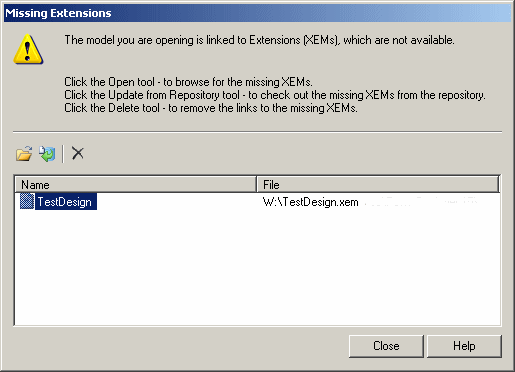The PowerDesigner modeling environment is powered by resource files, which define the objects available in each model along with the methods for generating and reverse-engineering them. You can view, copy, and edit these XML-format resource files in order to customize and extend the behavior of the environment.
For detailed information about viewing and editing PowerDesigner resource files, see Customizing and Extending PowerDesigner > Working with PowerDesigner Resource Files.
Extension files (*.xem) provide means for customizing and extending PowerDesigner metaclasses, parameters and generation. Extensions are typed like models in PowerDesigner. You create an extension for a specific type of model and you cannot share these files between heterogeneous models. When you create a new model, or when you reverse engineer into a new model, you can select one or several extensions and attach them to the model from the New dialog box.
For example, you can attach XEMs to a Java model to help you in working with a particular IDE, or O/R mapping framework. The XEM may provide objects with additional properties or property tabs, and define additional generation targets and options.
For more information about XEMs, including how to create your own, see Customizing and Extending PowerDesigner > Extension Files.



